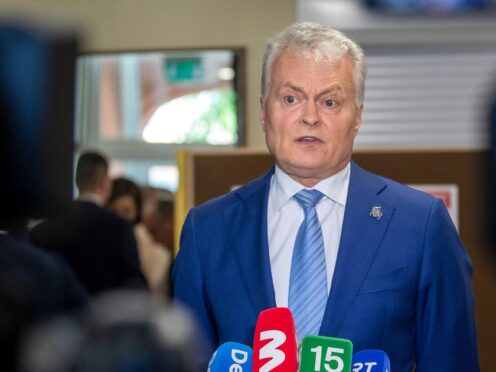Lithuanians have returned to the polls for the second round of the Baltic country’s presidential election as incumbent Gitanas Nauseda seeks to hold off Prime Minister Ingrida Simonyte and secure another five-year term.
Mr Nauseda, 60, a moderate conservative, has been a strong backer of Ukraine, a position shared across most of the political spectrum.
He has been in office since 2019 and during that time Lithuania has given refuge to many who have fled an authoritarian crackdown in neighbouring Belarus and increased repression in Russia.
The president’s main tasks in Nato-member Lithuania’s political system are overseeing foreign and defence policy, along with acting as the supreme commander of the armed forces.
Given that Lithuania is strategically located on Nato’s eastern flank, the presidency of a relatively small nation is given added importance as tensions rise between Russia and the West over the war in Ukraine.

The election comes as Russian gains in Ukraine are fuelling greater fears about Moscow’s intentions, particularly in the strategically important Baltic region.
After regaining its independence in 1991 from the Soviet Union, which occupied the southern-most Baltic country for five decades, Lithuania joined the European Union and Nato in 2004.
Both candidates have been outspoken critics of Moscow and of Minsk, a Russia ally.
Mr Nauseda, who is favoured to win another five-year term, is a former banker who entered politics with his successful presidential run in 2019.
He and Ms Simonyte won the first round of the election but failed to muster the 50% of votes needed to win the presidency outright.
Mr Nauseda won the first round on May 12 with 44% of the votes and Mr Simonyte secured nearly 20%.
Both Mr Nauseda and Ms Simonyte, who became prime minister in 2020, also ran against each other in the presidential run-off in 2019, which Mr Nauseda won with 66% of the votes.
Lithuania’s Central Electoral Commission is expected to announce the outcome of the election on Monday.
